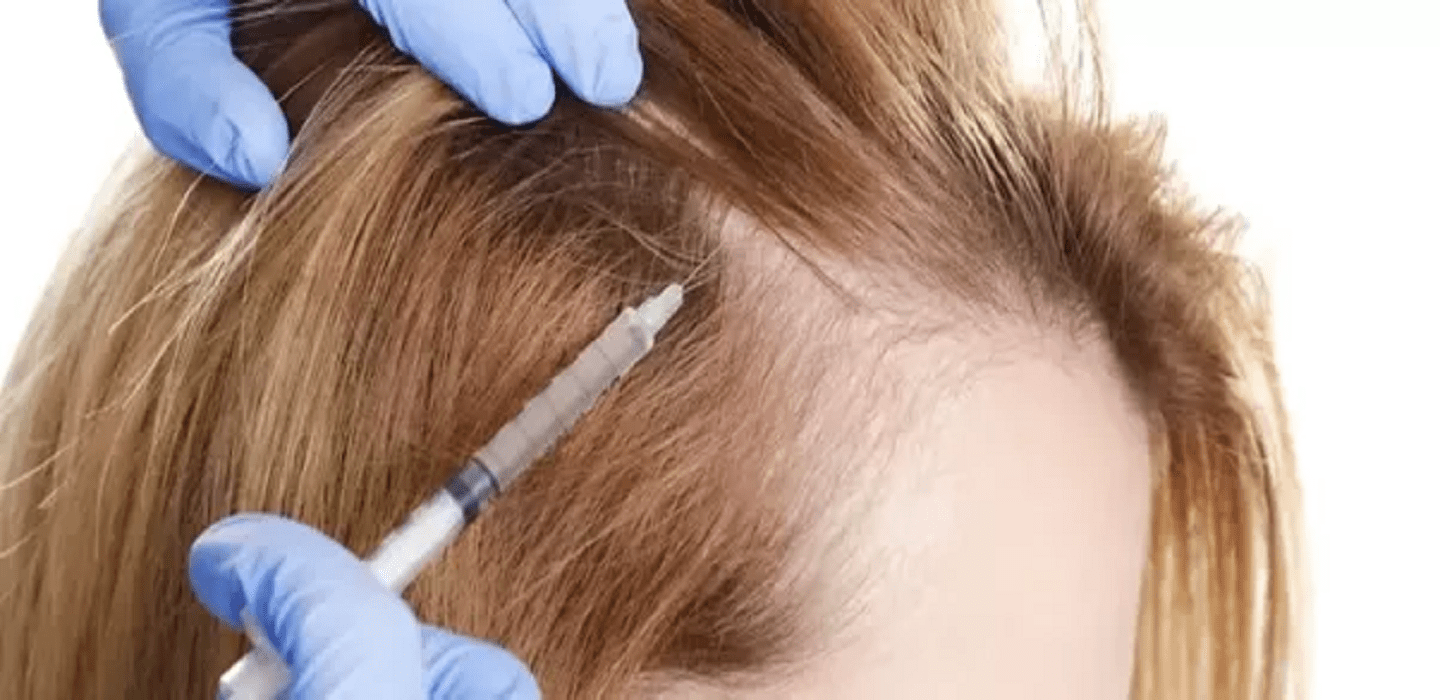Hair loss is a problem of the millennium. Both men and women experience hair loss in many forms due to numerous reasons. Since, hairs make your personality standout and are important part of your image; therefore women are more anxious in this regard. More than 50% of women experience noticeable hair loss by the age of 50. Gratefully, with advancements in medicinal technology and procedures, many options are available to counter the issue of hair loss. From hair transplantation to hair treatment; many procedures having different levels of reliability and success exist which make your hair worries go away. PRP is one such hair treatment method based on authentic science.
Platelet-rich Plasma (PRP) Treatment
Yes, the PRP hair treatment has proven to be successful in dealing with the female hair loss. Platelet-rich Plasma (PRP) is a three step hair loss treatment process. In PRP a person’s blood is drawn, processed and then injected into the scalp. The three step of the treatment are
First step
In the first step, the blood of the patient will be taken from his body, usually from the arm, and put into a machine called centrifuge. The function of centrifuge is to separate the blood into its elements.
Second step
In the second step the platelet-rich plasma is isolated from the blood. The centrifuge spins the blood for about 10-20 minutes and separates the platelet rich plasma from the red blood cells and white blood cells.
Third step
In the last step the PRP is injected into the scalp. With the help of a syringe, the processed plasma is then injected into those areas of scalp which require hair growth.
PRP Treatment For Female Hair Loss
The female hair loss pattern is different from those of men. The hair starts falling from the top of the head and then gradually along the temples.
PRP treatment for female hair loss has been successful.
According to several studies published in journals like Aesthetic Plastic Surgery, International Journal of Women’s Dermatology and the Journal of Cosmetic Dermatology, it has been observed that people experiencing hair loss have shown improved hair growth, increased hair density and hair thickness after going through the PRP treatment.
This treatment has also shown improved hair quality around the injection site on scalp. It should be kept in mind that PRP is not affective treatment for all causes of hair thinning and shedding.
In 2019, Dermatologic Surgery featured a review of 19 research studies that observed the PRP therapy for hair loss in 460 people. The review revealed that significant hair regrowth was reported in patients of hair loss. PRP is considered to be a promising technique.
In the data presented at the American Society for Dermatologic Surgery’s annual meeting, the PRP therapy showed significant improvement in hair density and caliber among women facing androgenetic alopecia (it is hair loss caused by factors like actions of hormones, ovarian cysts, menopause, pregnancy, use of birth control pills).
This procedure requires three treatments 4—6 weeks apart with maintenance treatments every 4-6 months. Studies have shown that this procedure has proven effective in comparison to other hair loss treatments like Rogaine. Experts are not sure of how treatments like Rogaine works, as they have many unpleasant side effects like weight gain and hair growth in unwanted places. Comparatively, PRP has minimal side effects and a quicker recovery time. Visible hair growth and improved hair density have been observed in patients just after few sessions of PRP.
Hair loss after pregnancy
Women usually face hair loss after pregnancy. PRP has been helpful in stimulating hair growth as long as the hair follicles are still alive. 90% of the women’s hair is growing whereas the remaining 10% are in resting phase. These resting hairs fall every 2-3 months. During pregnancy, estrogen plays a protective role, which stops the resting hair from falling down. After the birth of child, resting hair may fall out at once which can be very prominent for some women as resting hair comprises 60% of all hair. This is very stressful and PRP works wonders in such cases.
Hair loss due to stress
Physical stress, emotional stress including anxiety and depression are also an increasing reason of hair fall in women. PRP can also help with hair loss in such cases.
PRP cost
The cost for PRP hair treatment in Pakistan ranges from PKR 10,000 TO PKR 20,000. The cost may vary depending upon the choice of doctor, the materials used and the expenses of the hospital.
Side effects of PRP
As, PRP uses the blood of the patient itself there are very less chances of an infection. Other side effects of PRP are
- Headache
- Temporary bleeding at the injection site in scalp
- Risk of infection from the injection and tissue damage
- Itching
- Tenderness in scalp
- Swelling
As this PRP therapy for hair loss was initially devised for men as 80% face baldness therefore, small data is available in case of women. The studies done are carried out on comparatively small samples of female, but the success rate is very promising. Moreover, in comparison to hair transplant this method of treatment is less expensive, quicker and non-surgical with less pain and no scarring. Choosing the right clinic and surgeon is very important. It is advisable to carry out thorough research and make a wise decision.

